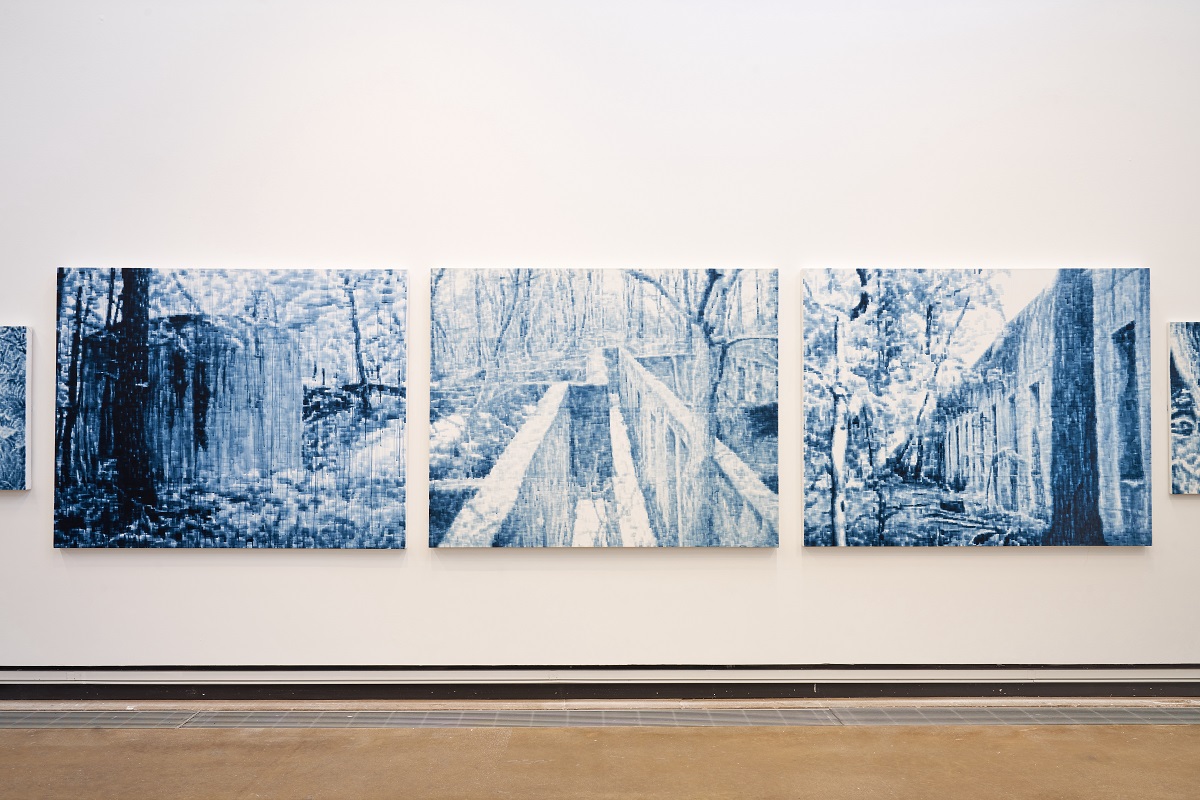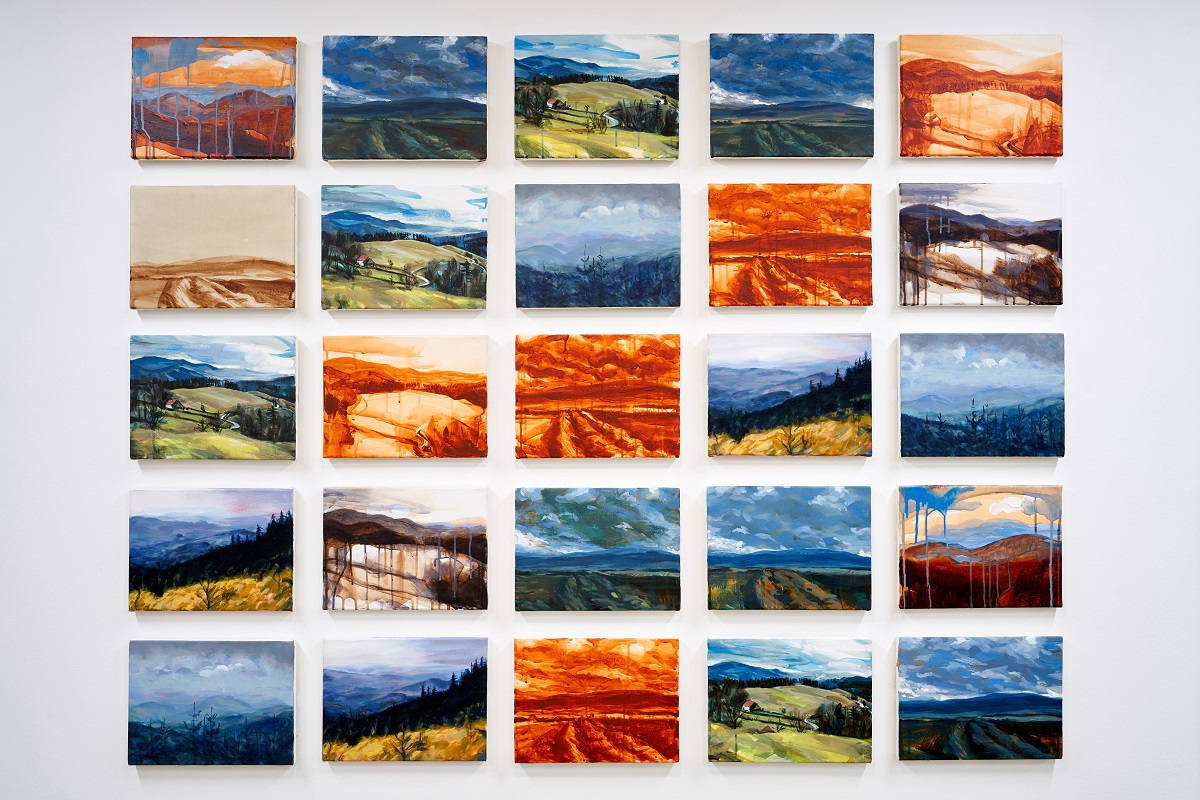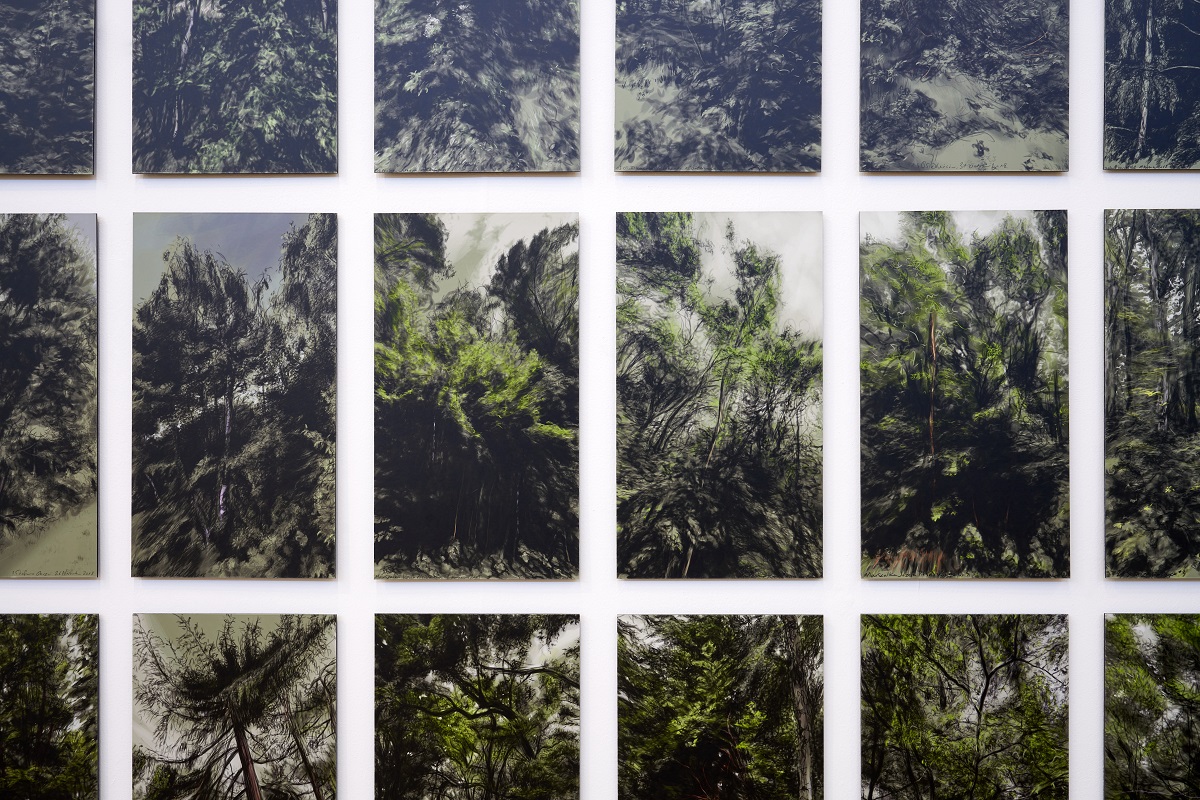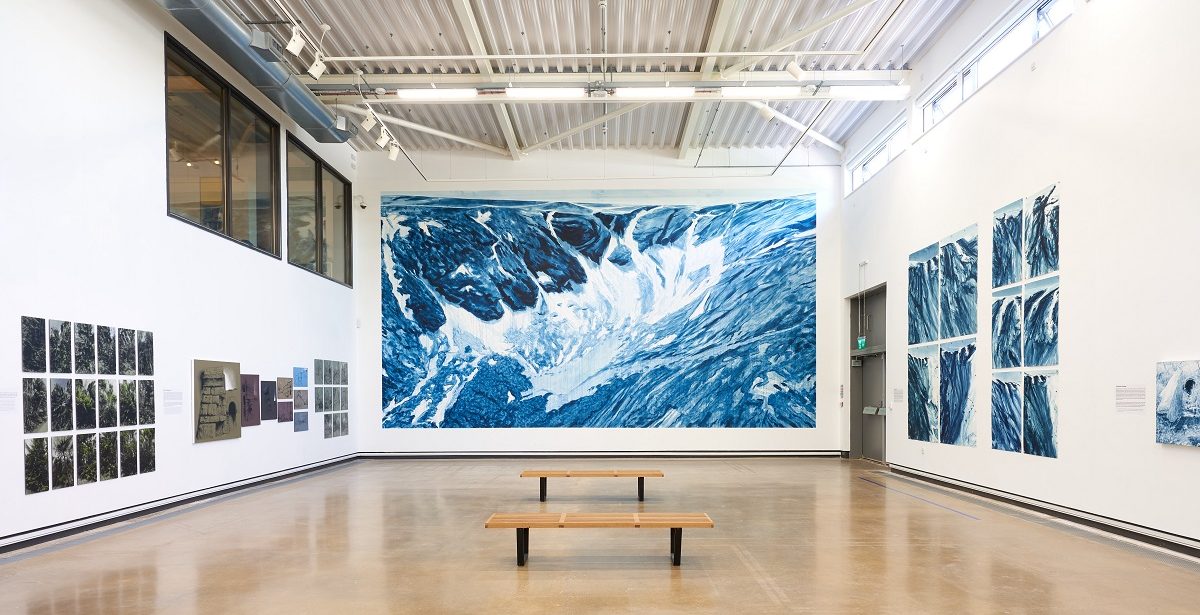Landscape painting becomes a geography of Europe’s violent past and the vanishing traces of family history
Considering Silesia brings together the largest and most comprehensive selection to date of paintings, drawings and prints by Nottingham-based artist Mik Godley. But rather than an unfocused retrospective, this exhibition concentrates specifically on works made as an oblique response to his own family’s connection to – and wartime displacement from – the formerly German, now mostly Polish region of Silesia, as mediated by the internet over an eighteen-year period. By Godley’s own account in the various lucid wall texts accompanying the works, it’s a project that began with the acquisition of his first computer, almost as a curious side-project, which rapidly expanded in scope, taking over much of the artist’s time and energy.

The earliest works here demonstrate Godley’s fascination with the possibilities of the digital mediation of imagery. Dating from around 2003, one series of small paintings, arranged in an image search style grid, uses a mix of virtuoso painterly techniques to replicate the limitations of small, low resolution online images showing Silesian hills, fields, mountains and skies. Another series, Der Reise (c.2006–09), is represented here by a quintet of monochrome blue-grey paintings in which thinly applied blocky brushstrokes reference both pointillism and the pixelation of poor-quality online photographs. The long-abandoned fortifications and tunnels seen in Der Reise were designed by Albert Speer for an unknown purpose and built by forced labour, at the cost of an estimated 28,000 lives between 1943 and 1945.

If the use of traditional painting techniques to reproduce the feel of digital images was the first step, the growing potential of iPads as drawing tools opens up other possibilities. The paradox at the heart of Considering Silesia is that the more advanced Godley’s digital tools and techniques become, the closer to eighteenth- and nineteenth-century-style draughtsmanship the results appear. In the recent Wałbrzych Mausoleum series (c.2018–19), a ruined and now densely overgrown neoclassical war memorial (masterminded by Robert Tischler on behalf of the Nazi-run German War Graves Commission in 1938) is shown in a series of prints made from detailed iPad sketches, themselves recombined from Google Earth views and other online documentation, to end up resembling a blend of 1970s Anselm Kiefer and the early architectural studies of JMW Turner.

Other iPad series, mainly dating from the 2010s, represent the foliage that often shrouds such historically uncomfortable monuments and much of the later iPad work in Considering Silesia explores the physical concealment and cartographic omissions that often keep sites like Der Reise and Wałbrzych Mausoleum from public view. The way that the Silesian landscape is charged with its own dark history is seen in the Glacial Landscape paintings (c.2016–17), which reproduce images of granite mountains (used as the source of stone in the construction of Third Reich buildings) found on Google Earth, here rendered in highly painterly monochrome brushstrokes. As though to play with this kind of mediation further, Godley presents one of these mountain landscapes as a largescale hand-painted mural executed by his former student Peter Barber.
Perhaps the most haunting works in Considering Silesia – in some respects, almost the anchors of the project – are the quasi-ethnographic oil and watercolour portraits sourced from early online dating sites between 2006 and 2010, representing Silesian men and women. These low-resolution selfies have a memento mori quality, pixelated in carefully applied monochrome blue and grey paint. These works come to feel like the ghosts of those caught up in the histories represented by the landscapes and buildings that surround them. Made during a period in which toxic nationalisms have taken hold in international politics, while new deportations and displacements carry unsettling echoes of the older, Central European history explored here, Considering Silesia feels as timely as it is undoubtedly richly layered.
Mik Godley: Considering Silesia is at Attenborough Arts Centre, Leicester, until 3 September
This article is part of Remark, a new platform for art writing in the East Midlands by ArtReview in collaboration with BACKLIT. Read more here and sign up for the Remark newsletter here
